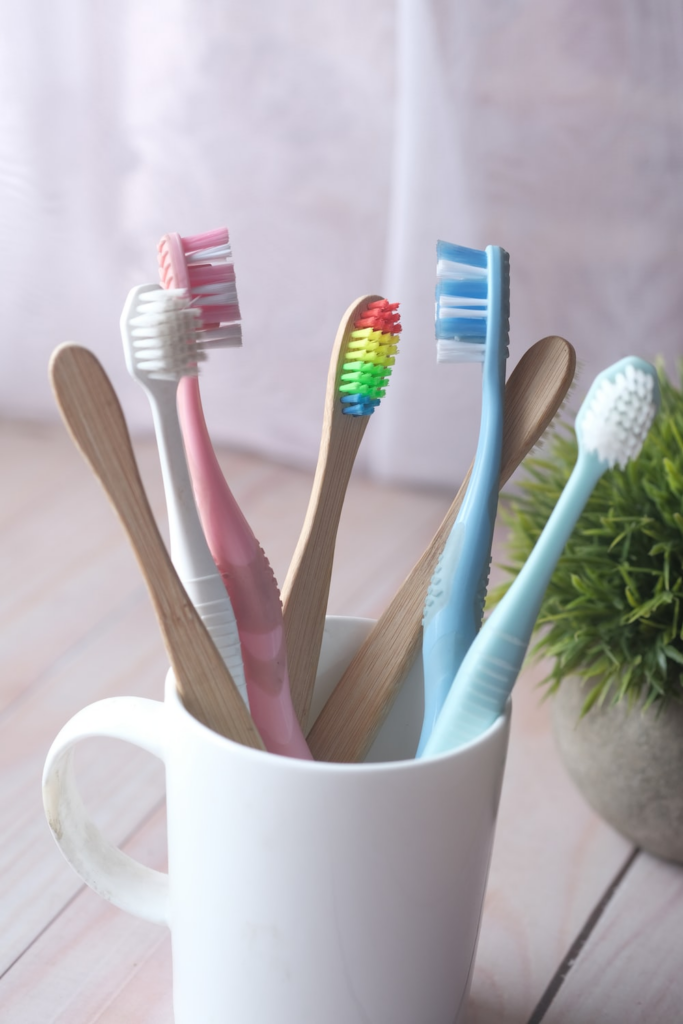
In today’s fast-paced world, maintaining good oral hygiene has never been more crucial. A fundamental tool in your oral care arsenal is the toothbrush. With the multitude of options available on the market, selecting the right toothbrush can be overwhelming. But fear not, as we’ve compiled this comprehensive guide to help you navigate through the toothbrush landscape and make an informed choice for your dental health.
Table of Contents
- Introduction: The Importance of a Toothbrush
- Types of Toothbrush Bristles
- Soft Bristles: Gentle and Effective Cleaning
- Medium Bristles: Finding the Balance
- Hard Bristles: Proceed with Caution
- Manual vs. Electric Toothbrushes
- Manual Toothbrushes: Traditional and Trusted
- Electric Toothbrushes: Power Your Cleaning Routine
- Choosing the Right Toothbrush Head
- Size Matters: Finding the Ideal Head Size
- Bristle Arrangement: Reaching Every Nook and Cranny
- Handle Ergonomics: Comfort and Control
- Grip Design: A Handle That Fits You
- Material: Durability and Texture
- The ADA Seal of Approval: Trusting Verified Products
- When to Replace Your Toothbrush
- Wear and Tear: Knowing When It’s Time
- Regular Intervals: A Key to Consistent Oral Care
- Travel-Friendly Toothbrushes: Oral Hygiene on the Go
- Children’s Toothbrushes: A Fun Start to Oral Care
- Colorful and Playful Designs
- Educational Features: Making Brushing Fun
- Eco-Friendly Toothbrush Options
- Bamboo Toothbrushes: A Sustainable Choice
- Recycled Materials: Reducing Plastic Waste
- Conclusion: Your Path to a Healthy Smile
Introduction: The Importance of a Toothbrush
Your smile is your introduction to the world, and a clean and healthy mouth is essential for overall well-being. The toothbrush is a cornerstone of oral hygiene, helping to prevent tooth decay, gum disease, and bad breath. As you embark on the journey to find the perfect toothbrush, keep in mind the specific needs of your teeth and gums.
Types of Toothbrush Bristles
Soft Bristles: Gentle and Effective Cleaning
Soft bristle toothbrushes are a popular choice, especially for individuals with sensitive teeth and gums. The gentle bristles effectively remove plaque and debris without causing irritation. Opting for soft bristles is a safe bet for most people.
Medium Bristles: Finding the Balance
Medium bristles provide a middle ground between soft and hard options. They offer thorough cleaning without being overly harsh. This type of toothbrush can be a suitable choice for those with relatively healthy teeth and gums.
Hard Bristles: Proceed with Caution
Hard bristle toothbrushes provide vigorous cleaning but may pose a risk of damaging the enamel and causing gum recession. Unless recommended by a dentist, it’s generally advisable to avoid hard bristles to protect your oral health.
Manual vs. Electric Toothbrushes
Manual Toothbrushes: Traditional and Trusted
Manual toothbrushes have been a staple for generations. They offer full control and are easily accessible. When using a manual toothbrush, focus on using proper brushing techniques to ensure effective cleaning.
Electric Toothbrushes: Power Your Cleaning Routine
Electric toothbrushes come with oscillating or rotating heads that simplify the brushing process. Their vibrating motion helps dislodge plaque and provide a thorough clean. They can be especially beneficial for individuals with limited dexterity.
Choosing the Right Toothbrush Head
Size Matters: Finding the Ideal Head Size
The size of the toothbrush head matters. A smaller head allows for better maneuvering, especially in hard-to-reach areas. Ensure that the brush head comfortably fits into your mouth and reaches your back molars.
Bristle Arrangement: Reaching Every Nook and Cranny
Some toothbrushes feature bristles arranged in varying patterns, such as crisscross or angled. These arrangements aid in reaching tight spaces between teeth and along the gumline.
Handle Ergonomics: Comfort and Control
Grip Design: A Handle That Fits You
An ergonomic handle design ensures a comfortable grip during brushing. Whether you prefer a straight or angled handle, choose one that feels natural in your hand to prevent slipping.
Material: Durability and Texture
Toothbrush handles are typically made from plastic or rubber. Consider the material that offers durability and a non-slip texture, ensuring your toothbrush lasts and remains easy to use.
The ADA Seal of Approval: Trusting Verified Products
The American Dental Association (ADA) evaluates and approves toothbrushes that meet their stringent criteria for safety and effectiveness. Look for the ADA Seal of Approval on toothbrush packaging to ensure you’re selecting a quality product.
When to Replace Your Toothbrush
Wear and Tear: Knowing When It’s Time
Over time, toothbrush bristles fray and wear down, reducing their cleaning efficiency. Replace your toothbrush or toothbrush head when you notice bristles bending or splaying.
Regular Intervals: A Key to Consistent Oral Care
Aim to replace your toothbrush every three to four months to maintain optimal oral hygiene. Consider replacing it sooner if you’ve been sick to prevent re-infection.
Travel-Friendly Toothbrushes: Oral Hygiene on the Go
Maintaining oral hygiene while traveling is essential. Travel toothbrushes are compact and often come with protective cases to keep them clean in your luggage.
Children’s Toothbrushes: A Fun Start to Oral Care
Colorful and Playful Designs
Children’s toothbrushes are designed to engage young minds and make brushing enjoyable. Vibrant colors, cartoon characters, and interactive features can motivate children to develop healthy oral care habits.
Educational Features: Making Brushing Fun
Some children’s toothbrushes incorporate educational elements, such as timers that encourage kids to brush for the recommended two minutes. These features instill good habits from an early age.
Eco-Friendly Toothbrush Options
Bamboo Toothbrushes: A Sustainable Choice
Bamboo toothbrushes are an eco-friendly alternative to traditional plastic ones. Bamboo is biodegradable and renewable, making it an excellent option for reducing plastic waste.
Recycled Materials: Reducing Plastic Waste
Several toothbrush brands craft their products from recycled materials, lessening the environmental impact of plastic production. These brushes offer effective cleaning while being kinder to the planet.
Conclusion: Your Path to a Healthy Smile
Choosing the right toothbrush is a critical step toward maintaining a healthy smile. By considering factors like bristle type, handle ergonomics, and environmental impact, you can make an informed decision that benefits both your oral health and the planet.



